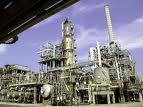The effective hydrotreating and removal of 4, 6 DMBT has become the refinery vernacular for measuring process complexity. Acccording to information currently available from major hydrocracking technology licensors, such as CB&I, effective hydrotreating and hydrocracking requires highly stable zeolitic catalysts and a reactor configuration designed with a 30 to 50% lower capital and operating expenditure than previous generation hydroprocessing systems.
While hydrotreating is an effective process for diesel focused markets requiring U.S. ULSD or Euro IV specifications, this goes without saying that hydrocracking is growing in importance due to the volume gain refiners are able to achieve. There are now over 300 hydrocrackers in operation throughout the world as demand turns more towards distillate than gasoline. In the interest of mitigating capital expense, many of these units are single reactor configurations rather than multiple reactors. However, the modern single reactor designs incorporate multiple reactor beds with highly stable zeolitic catalysts, as previously noted, that deliver as much as 60% conversion.
In many cases, the unconverted oil can be used as FCC feed to optimize gasoline yield and sulfur, while also controlling SOx emissions. This is why in spite of high hydrocracking unit capital costs, refiners can justify the economics of a new hydrocracking unit or revamp because of the increased distillate production as well as the indirect benefits to gasoline yield and quality from the FCC unit. In other cases, the unconverted oil is further processed into finished lubricants.








Leave a Reply
You must be logged in to post a comment.